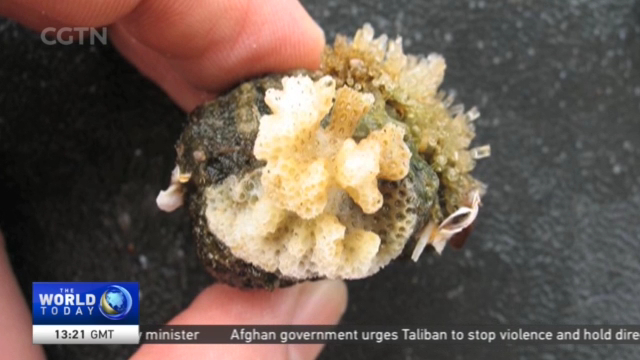
14:44, 09-Sep-2019
Australia Environment: Great Barrier Reef could be saved by giant floating pumice
Updated
15:15, 09-Sep-2019

Scientists say a giant floating raft of pumice, about the size of Manhattan, is heading toward Australia. It came from an underwater volcano eruption, and they believe it could help restore parts of the ailing Great Barrier Reef. Greg Navarro explains.
As an Australian couple sailed through the South Pacific earlier this year they encountered this.
SCOTT BRYAN ASSOCIATE PROFESSOR, QUEENSLAND UNIVERSITY OF TECHNOLOGY "As far as they could see the sea had turned to this field of stone."
That stone is pumice, from an underwater volcano that erupted near North Tonga. It initially forming a floating raft spanning 150 square kilometres - that's roughly the size of 20,000 football fields.
ANDREW FLETCHER RESEARCH FELLOW, QUEENSLAND UNIVERSITY OF TECHNOLOGY "If we were standing on the beach, for example, looking at this pumice it would go to the horizon."
Scott Bryan and Andrew Fletcher - both from Queensland University of Technology, are studying the raft and tracking its journey on a course for Australia's northeastern coast.
"That is the pumice raft just there."
GREG NAVARRO BRISBANE "The pumice poses no threat to people or the coastline here. Quite the opposite in fact. Because researchers believe the billions of pieces of pumice that will survive this journey will make their way to the Great Barrier Reef, each piece serving as a vehicle for organisms to hitch a ride."
Just last month, Australia's government downgraded the health of the reef, which has lost half of its coral, to very poor.
SUSSAN LEY AUSTRALIAN ENVIRONMENT MINISTER "This reef has suffered in the last few years, six cyclones, two major coral bleaching events and various attacks by the predator crown-of-thorns starfish, so unsurprisingly, the outlook is that the condition has deteriorated."
Bryan says some of the pumice will be carrying pieces of new coral.
SCOTT BRYAN ASSOCIATE PROFESSOR, QUEENSLAND UNIVERSITY OF TECHNOLOGY "Bringing billions and millions of individuals in at once, to be able to find a new home, add to the existing populations that are here that have suffered over the last few years through bleaching, cyclones in particular, just giving that extra boost of new numbers to help replenish and restore the reef."
The pumice raft continues to break up, which researchers say increases its chances of being dispersed along the Great Barrier Reef when it arrives next year. And while they stress it isn't a cure, they believe restocking some of the lost coral could help the reef to better cope with the threats it faces. Greg Navarro, CGTN, Brisbane.
SITEMAP
Copyright © 2018 CGTN. Beijing ICP prepared NO.16065310-3
Copyright © 2018 CGTN. Beijing ICP prepared NO.16065310-3